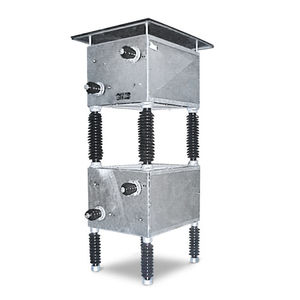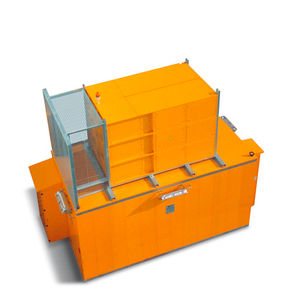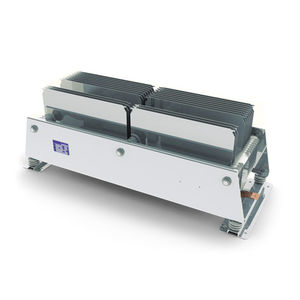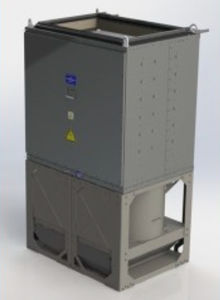
- Products
- Braking chopper
- Microelettrica
Braking unit




Add to favorites
Compare this product
Description
Starting and Braking Resistors are widely employed for controlling motors during start and/or stop.
Starting Resistors may be used for wound rotor induction motor and DC wound motor (this last type of motor is less and less common; adding a series resistor to each rotoric phase reduces the current and improves the starting torque. Starting Resistors may also be employed for squirrel cage induction motors, where series resistors added to the stator, limit initial current to three times its nominal value. Starting Resistors for squirrel cage motors are also known as Ballast Resistors.
The essential parameters needed to design a Starting Resistor are:
Horsepower
Rotor/Stator Voltage
Rotor/Stator Current
RPM
Application: different applications require different solutions
Crane control is a quite common application for Starting Resistors: during descent the load, especially if heavy, may cause the motor to generate power. Resistors are thus used to avoid unwanted and uncontrolled acceleration.
Braking Resistors for large motors are customised to best comply with any requirement: we have developed special Braking Resistors for important research institutes (among them Max Planck Institute) and for energies in excess of 3400MJ.
Disexcitation of large capacitors and inductors must be carried out with care to avoid impulsive currents that could damage them permanently. Discharge Resistorslimit the peak current and protect the capacitive/inductive device.
The essential parameters needed to design a Discharge Resistor are:
Nominal Voltage
Discharge Current
Discharge Duration
Catalogs
No catalogs are available for this product.
See all of Microelettrica‘s catalogs*Prices are pre-tax. They exclude delivery charges and customs duties and do not include additional charges for installation or activation options. Prices are indicative only and may vary by country, with changes to the cost of raw materials and exchange rates.











